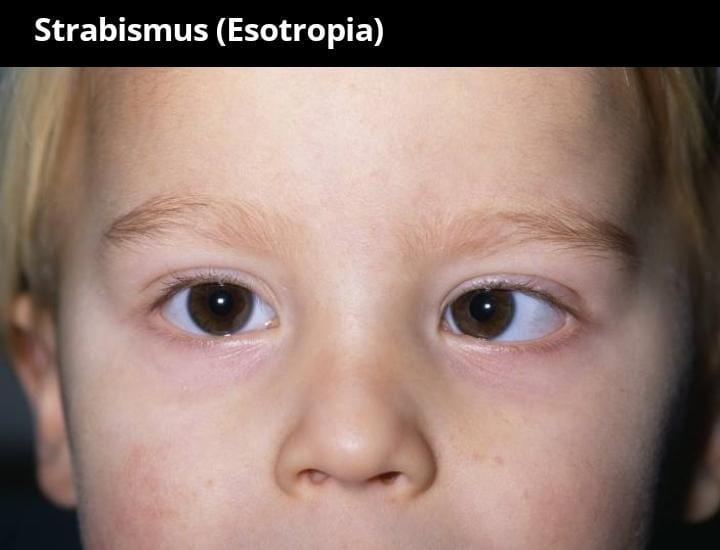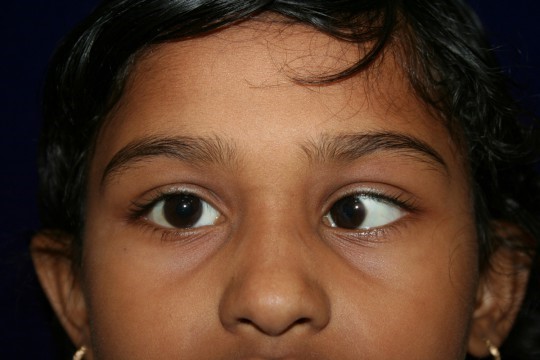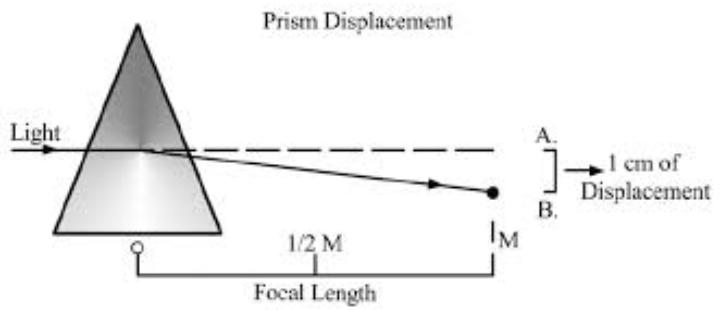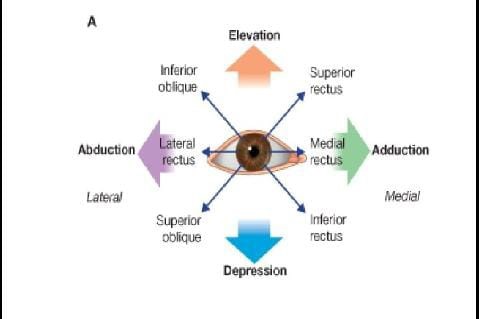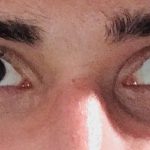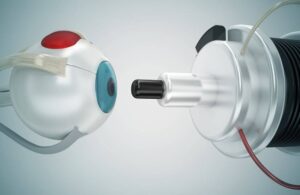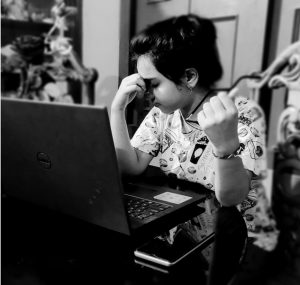Strabismus is misalignment of the eyes such that both eyes are not simultaneously directed at the same object.
- Esotropia: Esotropia is a type of strabismus characterized by an inward deviation of one eye relative to the other eye. It may be concomitant or in-concomitant.
- Concomitant: In a concomitant esotropia the variability of the angle of deviation is with in 5 prism diopters in different gaze positions.
- In-concomitant: In an In-concomitant deviation the angle of deviation differs various positions of gaze as a result of abnormal inner vation or restriction.
- Classification:
- Concomitant Esotropia:
- Infantile (congenital) Esotropia
- Accommodative Esotropia
- Refractive (Normal AC/A ratio)
- Non-refractive accommodative
Hyper Accommodative
Hypo Accommodative
- Mixed or partially accommodative
- Non-accommodative esotropia
- Acquired or late onset non-accommodative esotropia
Basic esotropia
Convergence excess type
Divergence insufficiency type
- Acute concomitant esotropia
- Microtropia
- Nystagmus blockage syndrome
- Cyclic esotropia
- Stress-induced esotropia/Intermittent esotropia
- Esotropia in myopia
- Esotropia due to spasm of near reflex
- Pseudo esotropia
- Sensory esotropia
- Consecutive esotropia
- In-concomitant Esotropia:
- Paralytic Esotropia
- Lateral rectus paralysis
- Divergence paralysis
- Mobius syndrome
- A-and-V pattern esotropias
- Special types of restricted esotropia
- Duane’s retraction syndrome (with Esotropia)
- Thyroid myopathy
- Medial orbital wall fracture
- Strabismus fix Sus
- Excessively resected medial rectus muscle
- Evaluation of a case:
- History (age of the patient, History of present illness, Birth history, Family history, past history, History of previous treatment)
- Vision Evaluation:
- Methods of estimating visual acuity in infants:
- Fixation behavior test
- Preferential looking test
- Optokinetic nystagmus
- Visually evoked response
- CSM method
- Methods of estimating visual acuity in preschool – age children:
- Marble game test
- Hand chart
- Illiterate E-game test
- Allen’s preschool test
- Sheridan-Gardiner test
- Methods of estimating visual acuity in school age children and adults:
- Snellen’s test types
- E-chart
- Landolt’s broken-C chart
- Preliminary Examination:
- Inspection
- Pupillary reaction
- Refraction
- Motor Evaluation:
- Head posture evaluation
- Evaluation for ocular deviation
- Extra ocular motility (EOM)
- Cover tests
- Direct cover test
- Cover-uncover test
- Alternate cover test
- Quantitative measurement of angle of deviation:
- Objective tests for heterotropia
- Hirschberg cornel reflex test (HCRT)
- Bruckner pupillary red reflex test
- Prism bar cover test (PBCT)
- Prism reflex test (Krimsky’s cornel reflex test)
- Synoptophore test
- Perimeter method
- Maddox rod test
- Subjective tests for heterotropia:
- Maddox rod test
- Synotophore test
- Diplopia charting test
- Lancaster red-green test
- Hess/less screen test
- Field of binocular fixation test
- Bielschowsky’s phenomenon test
- Bielschowsky’s head tilt test
- Assessment for ocular movements
- Evaluation of duction
- Evaluation of version
- Evaluation of vergence
- Assessment of accommodation, and AC/A ratio
- Assessment of extra ocular muscle paresis
- Abnormal head posture examination
- Diplopia charting
- Sensory Evaluation:
- Test for fusion
- Test for binocularity and diplopia
- Worth 4 dot test (9 gazes & walk away)
- Test for fixation
- Opthalmoscope
- Test for status of retinal correspondence
- Baglini striated glass test
- Diplopia charting test
- Prism bar & red filter test
- Synoptophore test
- Worth 4 dot test (All gazes & walk away)
- Bielschowsky’s after image test
- Cupper’s binocular Visu scope test
- Test for suppression and amblyopia
- Worth 4 dot test (9 gazes & walk away)
- The 4D base-out prism test
- Diplopia test or red glass test
- Bagolini’s striated glass test
- Synoptophore test
- Test for stereopsis
- Stereo fly test
- Synoptophore test
- Goals: The primary goal of treating esotropia is to reduce the deviation to orthotropia or as close to orthotropia as possible. In addition to improving alignment of the eyes of the eyes, additional goals are the development of some degree of sensory fusion & stereopsis and preservation of normal sight in each eye.
- Management: People with acquired esotropia can often successfully treat the condition with glasses and vision therapy, although surgery may be necessary some cases.

